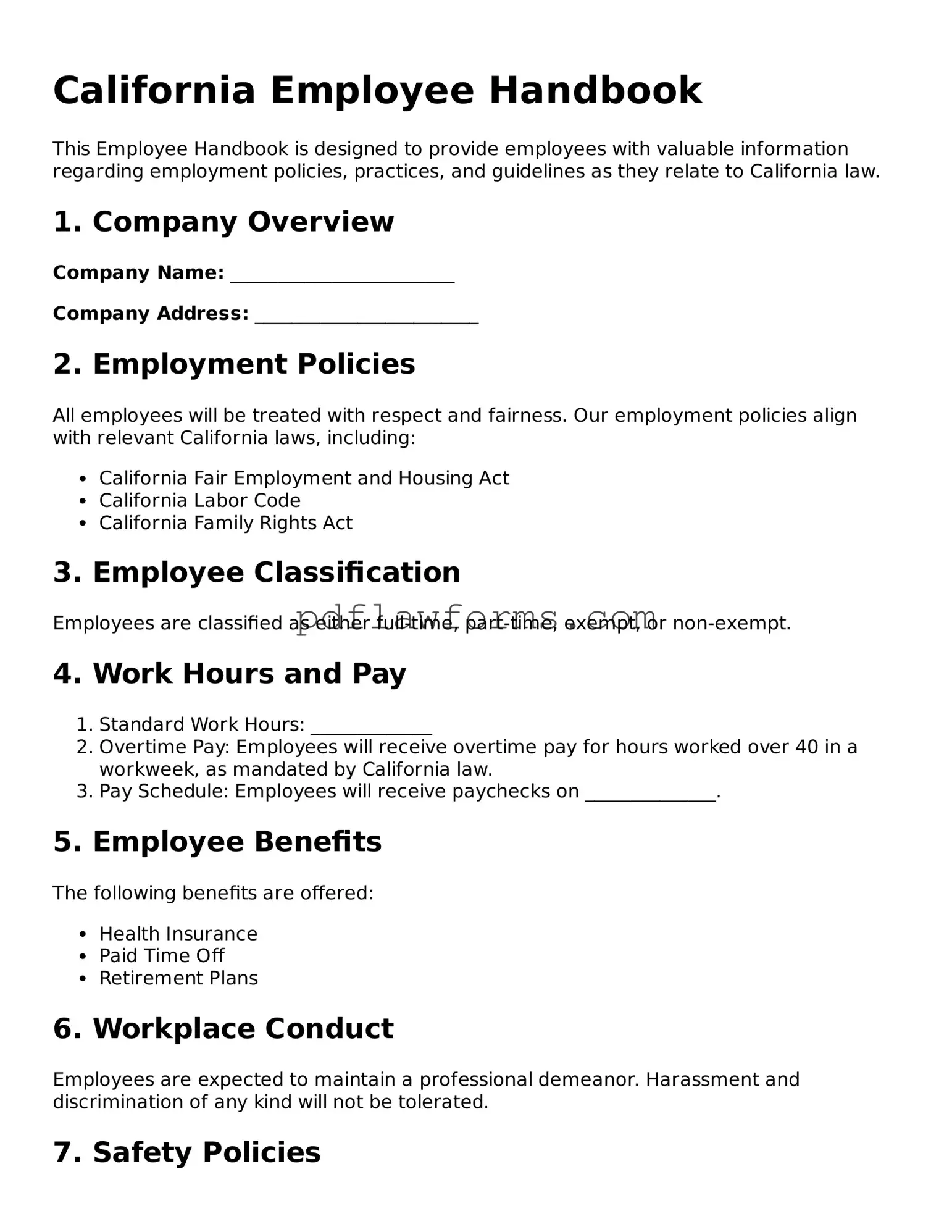Filling out the California Employee Handbook form can be a straightforward process, but many individuals make common mistakes that can lead to confusion or issues later on. One prevalent mistake is failing to read the instructions thoroughly. Skimming through the guidelines may result in incomplete or incorrect information being submitted.
Another frequent error is neglecting to provide accurate personal information. Employees often overlook the importance of double-checking their names, addresses, and contact details. Any discrepancies can lead to problems in communication and record-keeping.
Additionally, some individuals do not update their information promptly. Life changes such as marriage, divorce, or relocation may require updates to the handbook form. Failing to make these changes can result in outdated records that do not reflect the employee's current status.
Some employees mistakenly assume that their employer will fill in missing sections for them. Leaving blank spaces can lead to misunderstandings or delays in processing the handbook. It is crucial to complete every section to ensure clarity.
Another common mistake is not signing or dating the form. A signature confirms that the employee has read and understood the handbook. Without it, the form may be considered incomplete, which could lead to further complications.
Employees sometimes ignore the importance of keeping a copy of the completed form. Failing to retain a personal copy means there is no reference for future discussions or disputes regarding the handbook's contents.
Some individuals may also rush through the process, leading to typos or errors. Taking the time to carefully review the form before submission can prevent these mistakes and ensure that all information is accurate.
Furthermore, misunderstanding company policies can lead to incorrect interpretations of the handbook. Employees should take the time to clarify any points of confusion with their employer before completing the form.
Lastly, not seeking assistance when needed can hinder the process. Employees should feel comfortable asking questions if they are unsure about specific sections of the handbook. Seeking clarification can help avoid errors and ensure that the form is filled out correctly.
